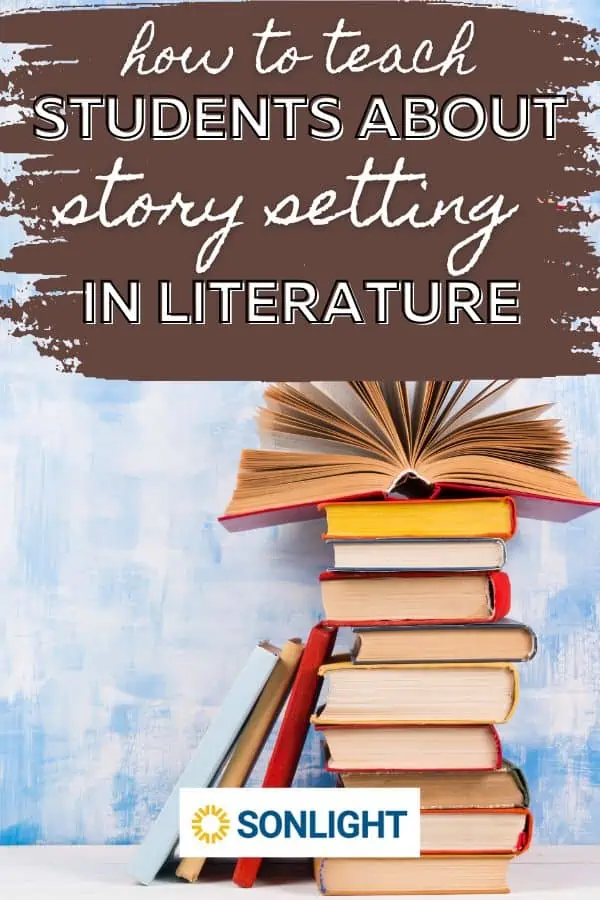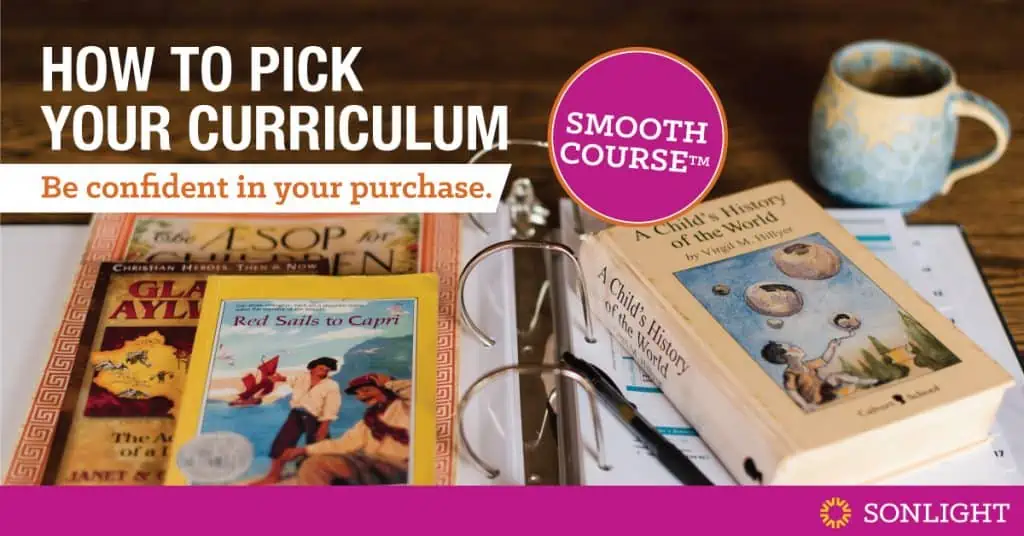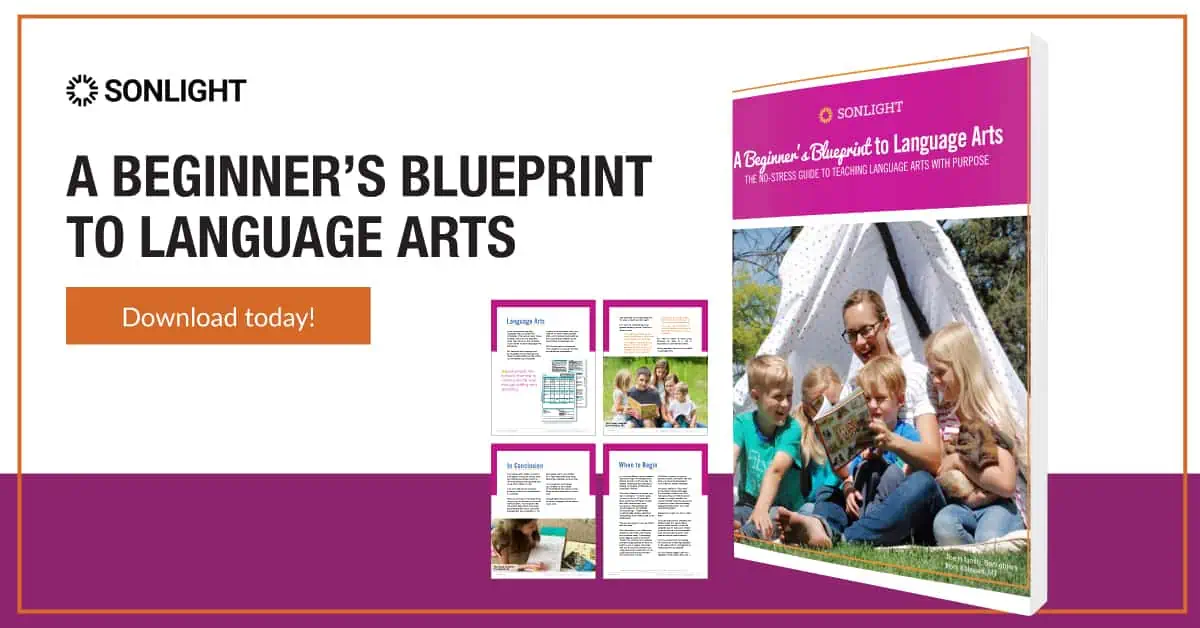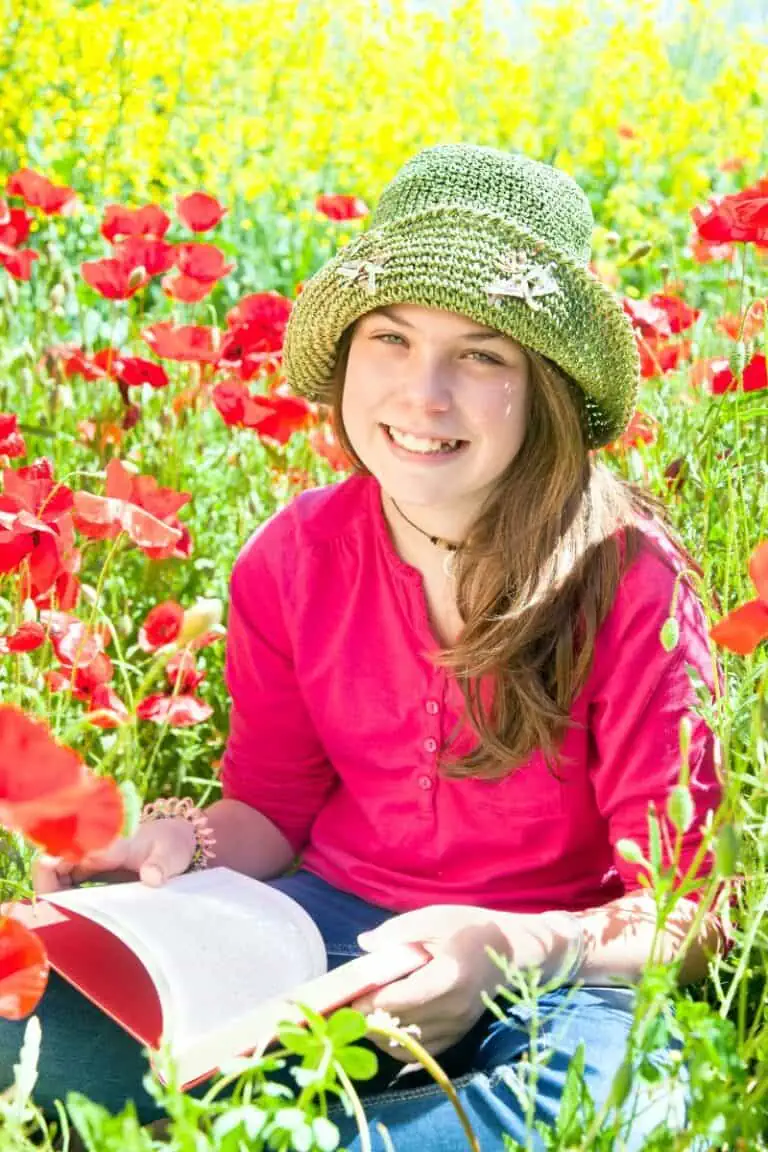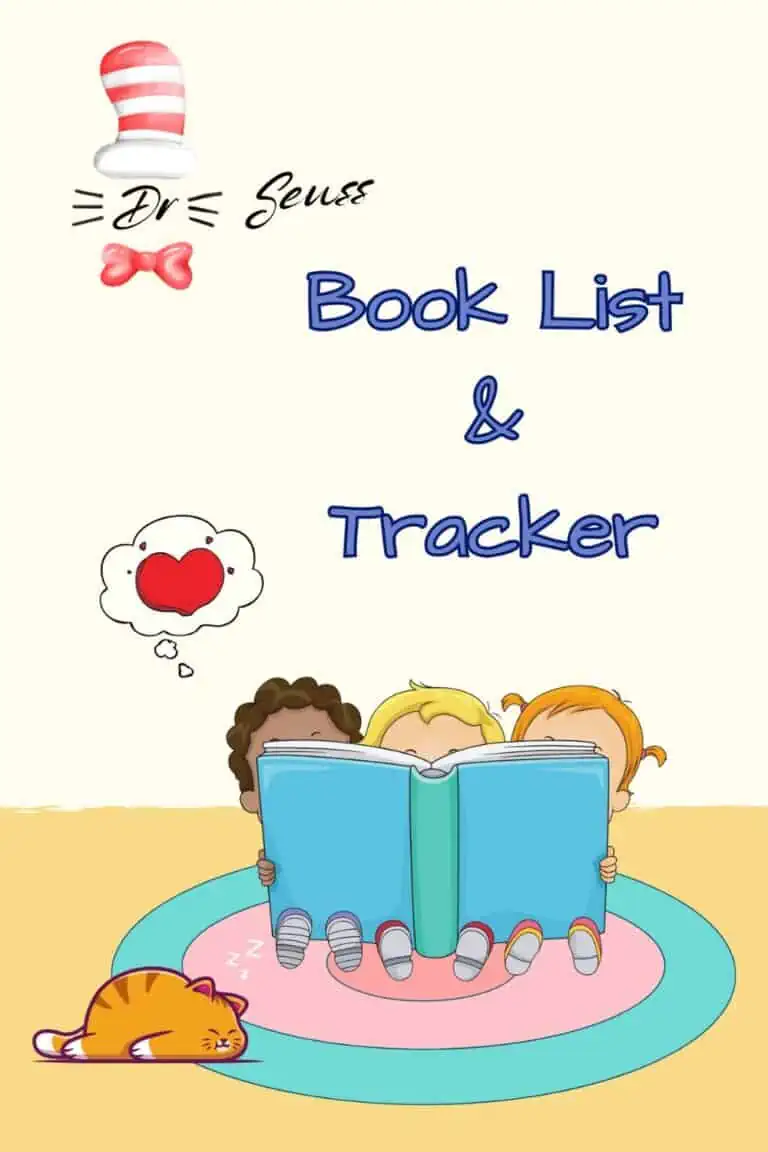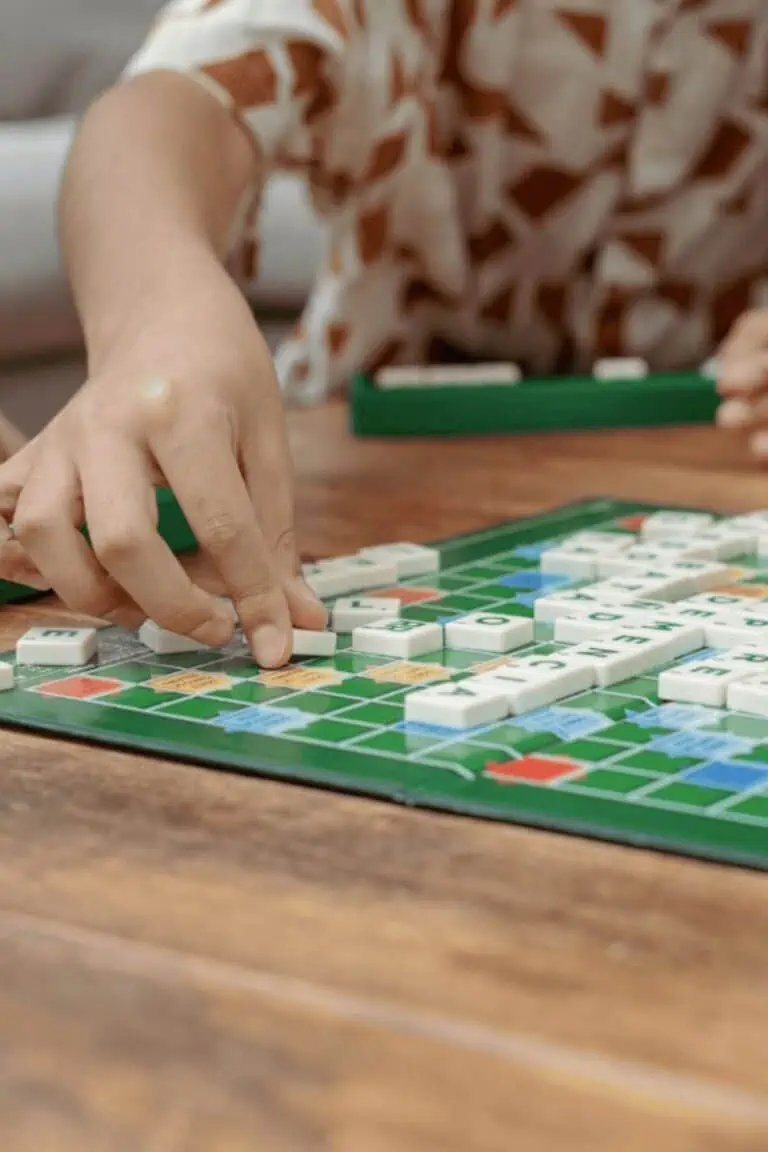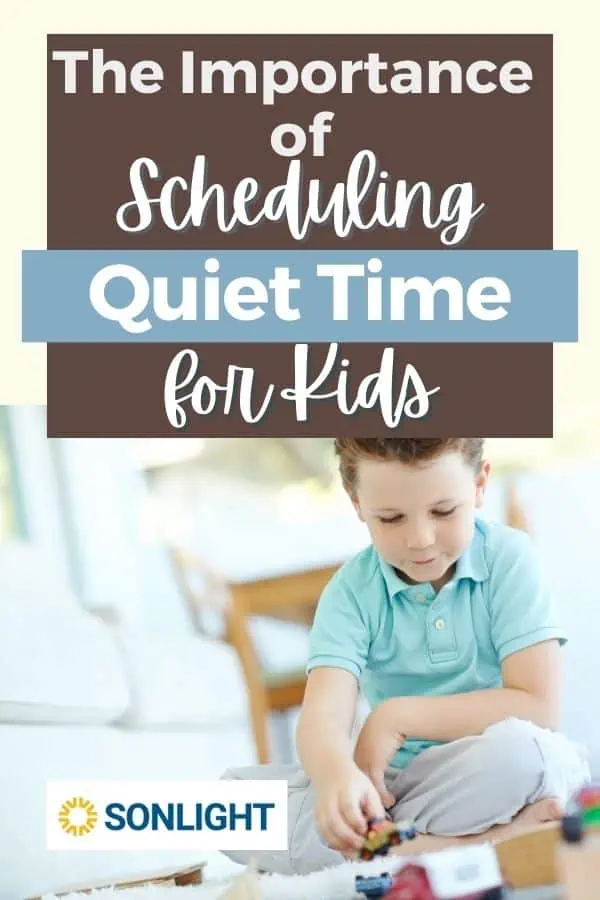How to Teach Students About Story Setting in Literature
Published:
January 17, 2023

Contributor:
Sonlight
Disclosure: This post may contain affiliate links, meaning if you decide to make a purchase via my links, I may earn a commission at no additional cost to you. See my disclosure for more info.
One of the key elements of a story is the setting. And when you’re teaching literature and reading books with your kids, you’ll want these tips for teaching setting.
The Setting of a Story
Teaching setting in your homeschool is important. That’s because the setting of a story can make all the difference! Imagine all your childhood favorites being set in a totally different time and place. How would that change the way you read the story?
The Basic Elements of Setting In a Story
The main story elements include the setting, characters, plot, conflict and resolution, theme, and point of view. The setting provides the right mood for the story. Of all the literary elements, the story’s setting plays a significant role.
So what are the basic elements of setting in a story? These basic elements are time period, physical location or place, and environment. You could even expand these basic setting elements to include culture, context, and mood. Sometimes a setting is referred to as the backdrop. And the fun part of a story’s setting is that it can be based on a real place in the world or it can be totally imagined! But it is a setting nonetheless.
The simplest way to define setting is the time and place in which a story is told. Based on this concise definition, let’s see how the setting can be determined.
Determining the Setting
Helping your kids determine the setting is a crucial reading comprehension skill. They should be able to figure out where and when the story takes place based on the context clues and descriptions in the story. Here are different aspects to consider when helping your kids learn about setting.
Mood and Atmosphere
Even a short story will include mood and atmosphere in its setting. Mood refers to the way a story makes the reader feel. Is it spooky or funny? Inspiring or suspenseful? The mood then informs the atmosphere. Atmosphere refers to the way the setting (place and time) makes the reader feel. The atmosphere of a story are all informed by the way your senses are engaged.
So, does the story make you see, taste, feel, hear, or smell something? Maybe you can just smell the sea air in the story of Swiss Family Robinson. That would be an example of how atmosphere contributes to the mood of adventure. And both the mood and the atmosphere come from the setting of the story.
Encourage your kids to see which senses are engaged through the setting.
Setting and Time
Another key aspect of a main setting is time. That is, when in time and space does this story take place? It might not even take place in the real world. It could be completely imaginary, like Tolkien’s Middle Earth. But even Middle Earth has a setting and nuances in time.
Time of Year
Different times of the year can make an impact on the story. Consider how the story changes as the time of year changes. Which clues from the story can your children notice that include time of year?
Time of Day
The time of day can contribute to different settings. Whether the main character is embarking on an adventure in the day or night may make a difference in the plot line. A visit to a haunted house will be much spookier at night.
Important Events or Historical Periods
Obviously, the time period and historical context will make a huge different in the story, characters, and possibly even the plot line. Plus, the historical setting of a story will also impact the social setting and how characters relate to each other and the circumstances around them.
Setting and Place
The setting is influenced by place, and this can refer to physical location or even an imaginary location. Consider C.S. Lewis’ world of Narnia. Even though his was an imaginary world, he still used vivid depictions of the geography of Narnia to create his story’s setting.
Location
Location plays a significant role in the setting of the story because it can influence the choices your characters take. The location of the story is the physical setting. Imagine if the (real) story of the Titanic took place in the Caribbean rather than the North Atlantic. Different locations surely would affect the plot.
Geography
Geography is important in setting because it refers to the human and physical characteristics that impact the story. Even if the story is fantasy or based on an imaginary place, there will still be a unique geography to help shape the characters and the plot. Consider the geography of C.S. Lewis’ Narnia or Tolkien’s Middle Earth and how the landforms inspire the story.
Clues to Finding the Setting
One of the best ways of teaching setting to your kids is to help them look for clues. If you’re wondering how to improve your child’s reading comprehension, teach them to look for context clues. Ask your kids to find words and descriptions that tell when and where the story takes place. Reading helps children to be able to become critical thinkers by analyzing what they read. Learning how to find the setting is just one small part of this critical thinking exercise.
How the Setting Affects the Story
The setting plays a significant role in the flow of the story. Not only does the setting affect the plot and characters directly, but it also helps the reader to be able to visualize the story and be an engaged reader. Another importance of setting is that it has a crucial role in shaping the overall theme and mood of the story.
How to Describe the Setting
If your children are writing stories and need to describe the setting, here are some great tips to follow.
- Use sensory language.
- Use figurative language.
- Share the character’s opinions about the setting.
- Look at pictures of a place similar to your setting and use them for inspiration.
Comparing Settings
When you have stories with a similar setting or a polar opposite setting, it’s fun to compare. You can use a visual chart, Venn diagram, or mood board to gather words and pictures that represent each setting. Then you can see what each setting has in common.
For example, while the imaginary worlds of Lewis’ Narnia and Tolkien’s Middle Earth are vastly different, you may also be able to compare them to find some similarities.
As your children work through the 5 stages of reading, you’ll be able to engage them on ever-growing deeper levels with literary analysis and discussion. And one of the easiest places to start is to compare the setting of one story to that of another.
Writing About the Setting
Writing about the setting can sometimes feel overwhelming, but if you have your kids outline or jot down some sensory details first before they begin writing a story, they’ll be better able to write about the setting.
For example, if their story takes place outside in the winter in a northern area, then they’ll want to write down all the words that touch their senses about being outside in the snow – what do they taste, smell, see, hear, and feel?
Activities for Teaching Setting
Here are some engaging ways to teach about setting in your homeschool.
Writing Activities
Writing activities are obviously essential when you’re learning about a story’s setting. Your kids can try their hand at writing their own short story and focusing on the setting. Use these paragraph writing worksheets for some great writing activities.
Graphic Organizers
Graphic organizers and anchor charts are essential for visual learners. Have your kids brainstorm some settings in recent books they’ve read and write down all the descriptions that tell the time and place of the story. Then, you can use a graphic organizer template to help your kids organize their thoughts as they create their own story’s setting.
Setting Mood Board
Mood boards are a fun tactile and visual tool to help you gather inspiration. Whether your student is creating a setting mood board to tell about a story they read or create a mood board for a story they intend to write, creating a setting mood board is a very helpful activity. Encouraging an active reading lifestyle in your homeschool will give your kids lots of inspiration as they create mood boards.
What can you include on a mood board? Anything visual and tactile like images, color swatches, fabric, fonts, and words are great additions to a mood board.
Story Maps
A story map is a graphic organizer that helps a student break apart and analyze the different elements of the story. So in a story map, your child would have a place to write about the characters, the problem, the solution, and of course the setting.
Find Quotes That Describe the Setting
This is a fun activity for teaching setting! See how many quotes that describe the setting your kids can find. Look for figurative language and interesting words. Here are some examples of engaging setting descriptions:
- wild and soggy view out the window
- hard stones of the castle wall
- brilliant rays of the sun
FAQ for Teaching Setting
The following questions will help clarify how teaching setting can be easily done.
How do you teach students setting?
Most children will naturally learn about setting as you discuss this literary element in your natural course of family read-alouds. This is why reading is so important. Even your young children can learn about setting by reading pictures books with you! Goldlilocks and the Three Bears has a setting. As does Jack and the Beanstalk.
What is an example of setting?
There are many examples of setting we could list here. Remember, setting is simply time and place. So the setting of a story could be at the beach in New Jersey at mid-day in the summer. Or the setting could be in a train station in Germany 100 years ago. Or the setting could be in an imaginary time and place. But it will still have a setting.
What are the 4 types of setting?
Setting can be broken down into four types: time, place, physical environment and social environment. The time includes time period, time of day, and time of the year. The place includes the location of the story. But the physical and social environment includes other aspects like physical geography and also cultural context.

